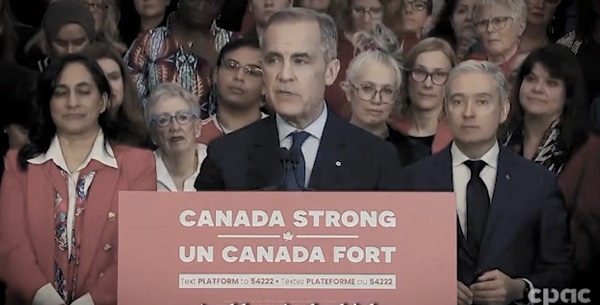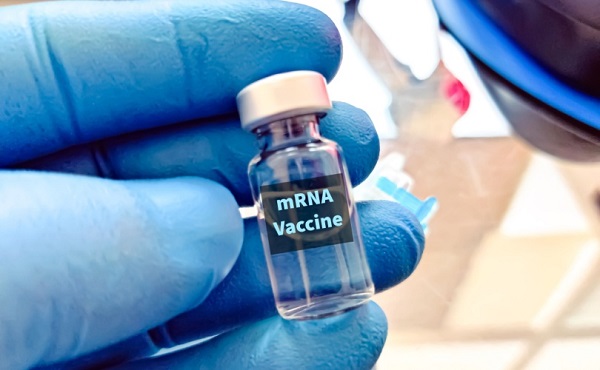Alberta
Province of Alberta loaning Orphan Well Association 100 Million to create jobs and accelerate clean up

From The Province of Alberta
Creating jobs, accelerating well cleanup
A government loan to the Orphan Well Association (OWA) will spur the creation of hundreds of green jobs and reduce the number of orphaned wells across Alberta.
As the first step in A Blueprint for Jobs, the province is extending its loan to the OWA by up to $100 million. This loan will bolster the association’s immediate reclamation efforts and generate up to 500 direct and indirect jobs in the oil services sector.
“Today’s investment is part of our Blueprint for Jobs. This taxpayer investment will create good-paying jobs while improving the environment. Actions like this will help to get Alberta back to work.”
“We are getting Albertans back to work while staying true to our province’s reputation as a responsible resource developer. This loan will increase economic activity across our province and is an important step in addressing the pressing issue of oil and gas liabilities – particularly in rural Alberta.”
“By staying on top of the orphaned well inventory, we’re helping to ensure a sustainable energy industry in Alberta. The Orphan Well Association continues to increase our efficiencies while also increasing the number of sites we are addressing. This loan will help us further these efforts while helping Alberta’s service sector and reducing the impact on affected landowners.”
Government and the OWA are currently finalizing specific loan terms and conditions, including establishing a repayment schedule. Both parties have agreed that this investment will be completed before April 1, 2021.
The Blueprint for Jobs is a plan to bring jobs and investment back to Alberta and restore the province’s position as the best place in the country to live, work, start a business, and raise a family. The Government of Alberta is focused on creating jobs, growing the economy and getting Alberta back to work.
Quick facts
- The loan extension will enable the OWA to:
- decommission approximately 1,000 wells
- start more than 1,000 environmental site assessments for reclamation
- The Alberta government previously provided the OWA with a $235 million interest-free loan. The OWA began repaying the loan in 2019, using money received from industry through the annual Orphan Fund Levy.
- In the coming weeks, government will be introducing a full suite of products, covering the entire lifecycle of wells from start to finish.
About the Orphan Well Association
The Orphan Well Association is an independent non-profit organization that operates under the delegated legal authority of the Alberta Energy Regulator (AER). The mandate of the OWA is to safely decommission orphan oil and gas wells, pipelines and production facilities, and restore the land as close to its original state as possible. Funding for the OWA comes primarily from the upstream oil and gas industry, through annual levies administered by the AER.
Key Terms
Inactive well: A well that has not been used for production, injection, or disposal for a specified amount of time – six months for high-risk wells, or 12 months for medium- and low- risk wells.
Orphan: A well, pipeline, or facility that does not have any legally responsible and/or financially able party to conduct abandonment and reclamation responsibilities.
Abandoned well: A well that is no longer needed to support oil and gas development and is permanently plugged, cut and capped according to Alberta Energy Regulator requirements.
Reclamation: The process of returning the site, as close as possible, to a state that’s equivalent to before it was disturbed. Companies are responsible for reclamation liability for 25 years, after which the liability reverts to the Crown.
Alberta
CPP another example of Albertans’ outsized contribution to Canada

From the Fraser Institute
By Tegan Hill
Amid the economic uncertainty fuelled by Trump’s trade war, its perhaps more important than ever to understand Alberta’s crucial role in the federation and its outsized contribution to programs such as the Canada Pension Plan (CPP).
From 1981 to 2022, Albertan’s net contribution to the CPP—meaning the amount Albertans paid into the program over and above what retirees in Alberta received in CPP payments—was $53.6 billion. In 2022 (the latest year of available data), Albertans’ net contribution to the CPP was $3.0 billion.
During that same period (1981 to 2022), British Columbia was the only other province where residents paid more into the CPP than retirees received in benefits—and Alberta’s contribution was six times greater than B.C.’s contribution. Put differently, residents in seven out of the nine provinces that participate in the CPP (Quebec has its own plan) receive more back in benefits than they contribute to the program.
Albertans pay an outsized contribution to federal and national programs, including the CPP because of the province’s relatively high rates of employment, higher average incomes and younger population (i.e. more workers pay into the CPP and less retirees take from it).
Put simply, Albertan workers have been helping fund the retirement of Canadians from coast to coast for decades, and without Alberta, the CPP would look much different.
How different?
If Alberta withdrew from the CPP and established its own standalone provincial pension plan, Alberta workers would receive the same retirement benefits but at a lower cost (i.e. lower CPP contribution rate deducted from our paycheques) than other Canadians, while the contribution rate—essentially the CPP tax rate—to fund the program would likely need to increase for the rest of the country to maintain the same benefits.
And given current demographic projections, immigration patterns and Alberta’s long history of leading the provinces in economic growth, Albertan workers will likely continue to pay more into the CPP than Albertan retirees get back from it.
Therefore, considering Alberta’s crucial role in national programs, the next federal government—whoever that may be—should undo and prevent policies that negatively impact the province and Albertans ability to contribute to Canada. Think of Bill C-69 (which imposes complex, uncertain and onerous review requirements on major energy projects), Bill C-48 (which bans large oil tankers off B.C.’s northern coast and limits access to Asian markets), an arbitrary cap on oil and gas emissions, numerous other “net-zero” targets, and so on.
Canada faces serious economic challenges, including a trade war with the United States. In times like this, it’s important to remember Alberta’s crucial role in the federation and the outsized contributions of Alberta workers to the wellbeing of Canadians across the country.
Alberta
Made in Alberta! Province makes it easier to support local products with Buy Local program

Show your Alberta side. Buy Local. |
When the going gets tough, Albertans stick together. That’s why Alberta’s government is launching a new campaign to benefit hard-working Albertans.
Global uncertainty is threatening the livelihoods of hard-working Alberta farmers, ranchers, processors and their families. The ‘Buy Local’ campaign, recently launched by Alberta’s government, encourages consumers to eat, drink and buy local to show our unified support for the province’s agriculture and food industry.
The government’s ‘Buy Local’ campaign encourages consumers to buy products from Alberta’s hard-working farmers, ranchers and food processors that produce safe, nutritious food for Albertans, Canadians and the world.
“It’s time to let these hard-working Albertans know we have their back. Now, more than ever, we need to shop local and buy made-in-Alberta products. The next time you are grocery shopping or go out for dinner or a drink with your friends or family, support local to demonstrate your Alberta pride. We are pleased tariffs don’t impact the ag industry right now and will keep advocating for our ag industry.”
Alberta’s government supports consumer choice. We are providing tools to help folks easily identify Alberta- and Canadian-made foods and products. Choosing local products keeps Albertans’ hard-earned dollars in our province. Whether it is farm-fresh vegetables, potatoes, honey, craft beer, frozen food or our world-renowned beef, Alberta has an abundance of fresh foods produced right on our doorstep.
Quick facts
- This summer, Albertans can support local at more than 150 farmers’ markets across the province and meet the folks who make, bake and grow our food.
- In March 2023, the Alberta government launched the ‘Made in Alberta’ voluntary food and beverage labelling program to support local agriculture and food sectors.
- Through direct connections with processors, the program has created the momentum to continue expanding consumer awareness about the ‘Made in Alberta’ label to help shoppers quickly identify foods and beverages produced in our province.
- Made in Alberta product catalogue website
Related information
-

 2025 Federal Election1 day ago
2025 Federal Election1 day agoCarney’s Fiscal Fantasy: When the Economist Becomes More Dangerous Than the Drama Teacher
-

 2025 Federal Election1 day ago
2025 Federal Election1 day agoCampaign 2025 : The Liberal Costed Platform – Taxpayer Funded Fiction
-

 International5 hours ago
International5 hours agoPope Francis has died aged 88
-

 2025 Federal Election1 day ago
2025 Federal Election1 day agoA Perfect Storm of Corruption, Foreign Interference, and National Security Failures
-

 Business5 hours ago
Business5 hours agoCanada Urgently Needs A Watchdog For Government Waste
-

 2025 Federal Election4 hours ago
2025 Federal Election4 hours agoCarney’s budget means more debt than Trudeau’s
-

 Energy4 hours ago
Energy4 hours agoIndigenous-led Projects Hold Key To Canada’s Energy Future
-

 International1 hour ago
International1 hour agoPope Francis Dies on Day after Easter








